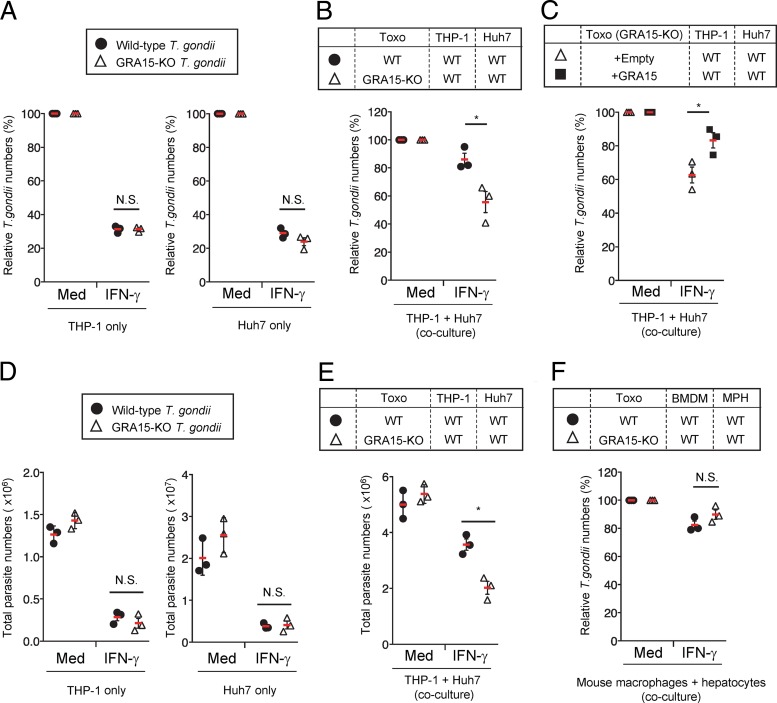FIG 1.
GRA15 suppresses IFN-γ-induced parasite reduction under THP-1/Huh7 coculture conditions. (A) THP-1 or Huh7 cells were left untreated (medium only [Med]) or treated with IFN-γ for 24 h and then infected with Pru T. gondii. The parasite survival rates were measured by luciferase assay. (B) THP-1 cells were infected with WT or GRA15-KO Pru T. gondii. The infected THP-1 cells were cocultured with Huh7 cells and then left untreated or treated with IFN-γ. The parasite survival rates were measured by luciferase assay. (C) THP-1 cells were infected with GRA15-KO Pru T. gondii stably expressing GRA15 or empty vectors. The infected THP-1 cells were cocultured with Huh7 cells and then left untreated or treated with IFN-γ. The parasite survival rates were measured by luciferase assay. (D) THP-1 or Huh7 cells were left untreated or treated with IFN-γ for 24 h and then infected with wild-type or GRA15-KO Pru T. gondii. The parasite numbers were calculated by quantification of the amount of genomic DNA of the sag1 gene, which was measured by qPCR, using the standard curve shown in Fig. S1F. (E) THP-1 cells were infected with WT or GRA15-KO Pru T. gondii. The infected THP-1 cells were cocultured with Huh7 cells and then left untreated or treated with IFN-γ. The numbers were calculated by quantification of the amount of genomic DNA of the sag1 gene, which was measured by qPCR, using the standard curve shown in Fig. S1F. (F) BMDMs were infected with WT or GRA15-KO Pru T. gondii. The infected BMDMs were cocultured with primary mouse hepatocytes and then left untreated or treated with IFN-γ. The parasite survival rates were measured by luciferase assay. Indicated values represent means ± standard deviations (SD) (three biological replicates per group from three independent experiments) (panels A to F). *, P < 0.05; N.S., not significant (Student's t test).

